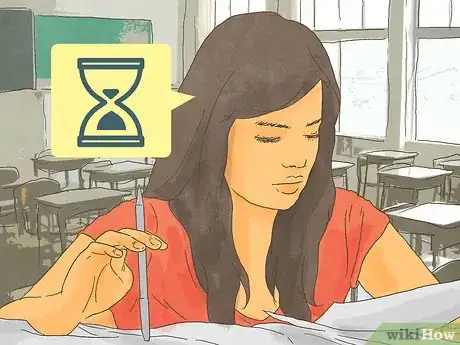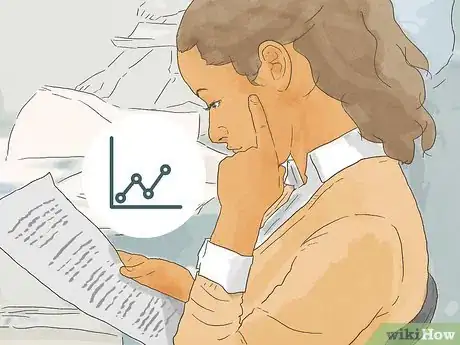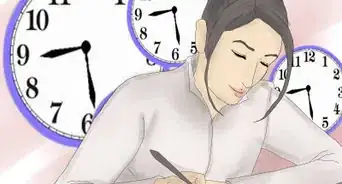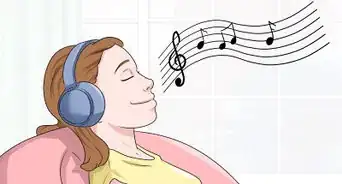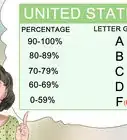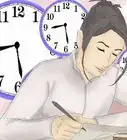This article was co-authored by Emily Listmann, MA. Emily Listmann is a private tutor in San Carlos, California. She has worked as a Social Studies Teacher, Curriculum Coordinator, and an SAT Prep Teacher. She received her MA in Education from the Stanford Graduate School of Education in 2014.
There are 8 references cited in this article, which can be found at the bottom of the page.
This article has been viewed 91,302 times.
If you're stumped on a hard test question, guessing strategically can improve your chances of choosing the right answer. Look for context clues throughout the test that can help you with a tricky problem. Choose answers that seem familiar, even if it's just a subtle feeling of deja vu. Look for patterns in true or false questions, and go with false if a question includes absolutes, such as "all" or "none." When guessing on multiple choice questions, use processes of elimination, look for grammatical clues and, when in doubt, go with the most detailed choice.
Steps
Guessing on True or False Tests
-
1Answer the questions you know first. You’ll obviously want to answer as many questions as possible without running out of time. In addition, knowing the right answers to the questions above and below a tricky true or false problem can help you find a pattern. Guessing based on a true or false pattern is better than just guessing randomly.[1]
- When answering the questions that you know on a test that has a separate answer sheet, make sure that you skip the same questions on the answer sheet as you do on the test itself. This way, your answers won't become off set.
-
2Choose the opposite answer if the surrounding answers are the same. Suppose you know the answers above and below a tricky question are both true. Chances are, the correct response to the tricky question is false. There is a low probability that the same correct response will appear three times in a row.[2]Advertisement
-
3Guess false if there’s an absolute modifier. Absolute modifiers are words that don’t allow for exceptions, such as all, everyone, never, and always. There aren’t many things that always happen without any exceptions, so questions that have absolutes are usually false.[3]
- When a question with an absolute modifier is true, it’s often a well-known, common sense fact that doesn’t make for a good test question.
-
4Guess true if you see words like some, most, or a few. In-between words, as opposed to absolutes, are more likely to be true. If a statement allows for exceptions, it’s more probable that it’s true at least some of the time.[4]
- Other in-between words include usually, often, seldom, and frequently.
-
5Choose true if you’re totally stumped. Go with true if none of the other true/false tips apply, and you have no clue what the answer is. Recalling a fact is easier than inventing a falsehood, so test makers tend to include more true answers than false.[5]
- For instance, if you’re stumped on a question with no absolute or in-between modifiers, and if the answer above is true and the one below is false, your best bet is to go with true.
Guessing on Multiple Choice Tests
-
1Make a guess before looking at potential answers. Often, an answer choice may be listed as an option in order to trick you. When you first read a question, try not to look at the choices or cover them with your hand to avoid doubting yourself and getting stuck. Try to make a guess off of the top of your head. Then, read the choices and see if any of them are close to your guess.[6]
-
2Eliminate outliers and the highest and lowest numbers. Rule out choices that are funny, obviously wrong, or seem totally out of left field. If the possible answers are numbers, rule out the highest and lowest choices, then guess between the options left in the middle range.[7]
-
3Look for grammatical clues. It might seem like a no brainer, but a test maker might occasionally overlook a question that only makes grammatical sense with one answer. Read the question and possible answers carefully, and eliminate the choices that don’t match the question’s grammar.[8]
- For instance, if a question asks, “A salamander is an,” and “amphibian” is the only choice that starts with a vowel, you’ll know it’s the right answer.
-
4Guess “all of the above” if it only appears once on the test. If only one question has an “all” or “none of the above” choice, that’s probably the right answer.[9] However, use your best judgement if you’re confident that at least one choice doesn’t fit.
- If you’re completely stumped and can’t rule out any choices, going with all or none could offer a good probability of choosing correctly. When all or none of the above are choices in every question, they’re the correct response as often as 65% percent of the time.[10]
Making Educated Guesses
-
1Ask to see past exams. Ask if your teacher keeps past exams on file and if they’d be willing to share them with you. You can get a feel for the types of questions they ask and look for patterns in correct answers.[11]
- Keep in mind that it’s always better to study the material instead of trying to outsmart your teacher. If you have a choice between studying your notes or figuring out how often “True” is the right answer, go with studying.
-
2Find out if blank answers are marked incorrect. Ask your teacher or find out whether your standardized test takes points off for blank answers. Some test makers discourage guessing by deducting points only for incorrect responses. If you don’t get points off for a blank response, it’s best not to guess.[12]
- The SAT used to have a guess penalty. It ignored blank responses and deducted points only for wrong answers. However, College Board got rid of the guess penalty in 2016. The PSAT, ACT, and AP tests don’t use a guess penalty either. For each of these tests, you get a point for a correct answer and zero points for a blank or incorrect answer.[13]
- Standardized tests are subject to change, so make sure you know if an updated test includes a guess penalty.
-
3Answer questions you know before making guesses. Time management is often a key test taking factor. Instead of spending too much time trying to make a good guess on a tricky question, breeze through all the questions you can answer confidently. You wouldn’t want to run out of time and leave an easy question blank.[14]
-
4Look for context clues in the rest of the test. You might find a clue to a tricky question elsewhere in a test. Other questions might jog your memory or give you a context clue that shines a spotlight on the right answer to a hard question.[15]
- For example, suppose a multiple choice question asks if a weta is a plant, insect, fish, or mammal. A later question asks, “How many species of weta have entomologists identified?” If you know entomologists study insects, you’ll know the answer to the earlier question.
-
5Go with an answer that seems familiar. Sometimes the right answer will trigger a feeling of deja vu. If you’re torn between a familiar answer and one with terms you’ve never seen before, choose the one that rings a bell.[16]
Expert Q&A
Did you know you can get expert answers for this article?
Unlock expert answers by supporting wikiHow
-
QuestionHow can you guess an answer when you don't even understand the question?
 Emily Listmann, MAEmily Listmann is a private tutor in San Carlos, California. She has worked as a Social Studies Teacher, Curriculum Coordinator, and an SAT Prep Teacher. She received her MA in Education from the Stanford Graduate School of Education in 2014.
Emily Listmann, MAEmily Listmann is a private tutor in San Carlos, California. She has worked as a Social Studies Teacher, Curriculum Coordinator, and an SAT Prep Teacher. She received her MA in Education from the Stanford Graduate School of Education in 2014.
Test Prep Tutor If you don't get the question, follow the steps above that do not require comprehending the question and lead you to a more “wild guess” that still has a higher probability of being correct. An example of this is choosing "false" if a true/false test question contains an absolute modifier, such as "always" or "never."
If you don't get the question, follow the steps above that do not require comprehending the question and lead you to a more “wild guess” that still has a higher probability of being correct. An example of this is choosing "false" if a true/false test question contains an absolute modifier, such as "always" or "never." -
QuestionHow do I study without getting bored/distracted/discouraged?
 Community AnswerTry to understand how you learn best. If you like listening to music, listen to music while you study, as long as the music will not distract you. Clear your working area so you don't get distracted by that eraser sitting right there. Never feel discouraged. You can always ask questions and get help if you don't understand the topic.
Community AnswerTry to understand how you learn best. If you like listening to music, listen to music while you study, as long as the music will not distract you. Clear your working area so you don't get distracted by that eraser sitting right there. Never feel discouraged. You can always ask questions and get help if you don't understand the topic. -
QuestionPeople cheat off of me and then it looks like I cheated. The teacher makes me redo it. Any advice?
 Community AnswerTell your teacher exactly what's going on and who is trying to cheat off you. If these people sit near you, ask to move your seat.
Community AnswerTell your teacher exactly what's going on and who is trying to cheat off you. If these people sit near you, ask to move your seat.
References
- ↑ http://www.bbc.com/future/story/20140905-the-secret-to-acing-exams
- ↑ http://www.bbc.com/future/story/20140905-the-secret-to-acing-exams
- ↑ https://universitylifecafe.k-state.edu/bookshelf/academicskills/tipsfortruefalseexams.html
- ↑ https://universitylifecafe.k-state.edu/bookshelf/academicskills/tipsfortruefalseexams.html
- ↑ https://www.upb.pitt.edu/sites/default/files/files/2019-10/academic-advising-center_Multiple-Choice-T-and-F.pdf
- ↑ https://www.upb.pitt.edu/sites/default/files/files/2019-10/academic-advising-center_Multiple-Choice-T-and-F.pdf
- ↑ http://docs.hamptonu.edu/student/6476-scc_hints_for_educated_guessing_20140721115711.pdf
- ↑ https://student.unsw.edu.au/multiple-choice-exams
- ↑ http://docs.hamptonu.edu/student/6476-scc_hints_for_educated_guessing_20140721115711.pdf
- ↑ http://www.bbc.com/future/story/20140905-the-secret-to-acing-exams
- ↑ https://student.unsw.edu.au/multiple-choice-exams
- ↑ https://student.unsw.edu.au/multiple-choice-exams
- ↑ https://www.kaptest.com/blog/admission-possible/2016/09/22/should-you-guess-on-the-psat-sat-or-act/
- ↑ https://summer.harvard.edu/blog/14-tips-for-test-taking-success/
- ↑ https://www.dmu.edu/wp-content/uploads/MULTIPLE-CHOICE-TEST-TAKING-STRATEGIES.pdf
- ↑ http://www.bbc.com/future/story/20140905-the-secret-to-acing-exams
About This Article
Learning to properly guess on a test can actually improve your chances of getting the right answer. When you’re taking a test, answer the questions you know first, then go back and guess on the ones you don't know. That way, you don’t risk running out of time and missing easy points. If you’re working on multiple-choice questions, start by eliminating the answers you know are wrong. Then, guess between the remaining options. If you’re answering a true or false question, pick false if there’s an absolute modifier in the question like, “never” or “always,” since these questions tend to be false. Alternatively, pick “true” if the question contains in-between words like “most” or “a few.” Keep in mind that tests usually include more true answers than falses, so pick true if you’re totally stumped. To learn how to take advantage of your past exams to improve your test-taking skills, read more from our Educational co-author!
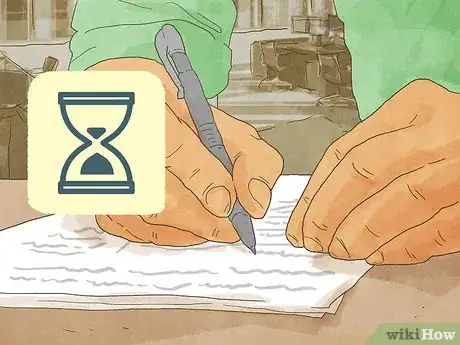
-Step-10-Version-2.webp)

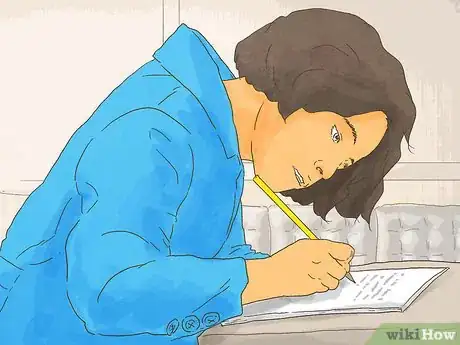

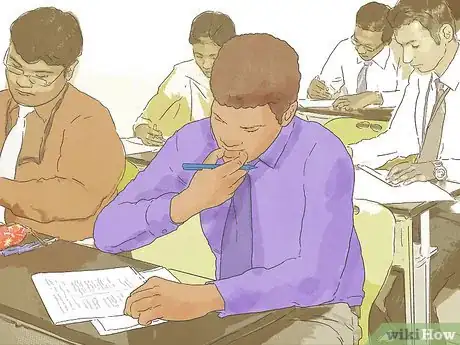
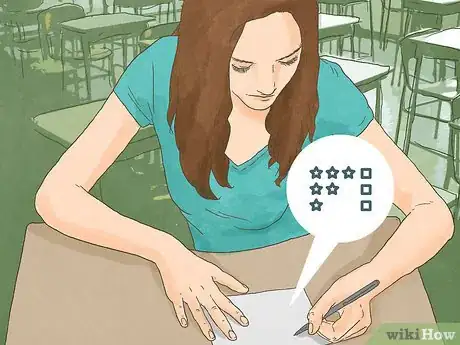

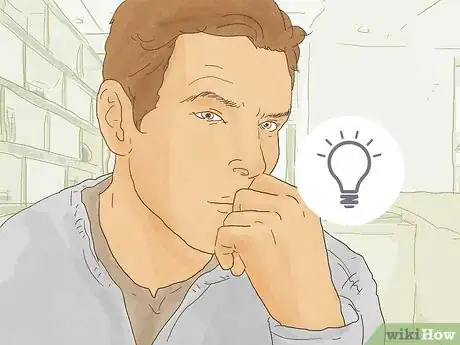

-Step-17.webp)
